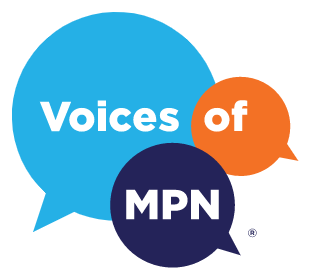Get Facts on Essential Thrombocythemia

Author: Voices of MPN
Essential thrombocythemia (e-SEN-chel throm-boe-sigh-THEE-me-uh), or ET, is a rare, chronic blood cancer in which a person’s bone marrow makes too many platelets. Bone marrow is a spongy tissue inside of the bone, and is the primary place where blood cells are made.
Finding out that you or someone you love has a rare disease like ET can leave you with a lot of questions. Chances are, you’ve never heard of this condition before and you may not know where to turn for information. It’s important to know, however, that you’re not alone. Approximately 71,000 to 88,000 people in the United States have ET. Taking control of ET starts with gaining knowledge.
Here, you’ll find some important facts about ET to help you on your journey. The more you know, the more empowered you’ll be to work with your Healthcare Professional in managing your condition.
What Else Should I Know About ET?
Platelets travel through the blood vessels and bind together to stop bleeding—when a person gets a cut, for instance. When the bone marrow makes too many platelets, as in ET, it’s harder for blood to flow, which can contribute to unnecessary clot formation. Clotting can lead to serious health problems, like heart attack or stroke.
ET can also cause other problems, including bleeding, if your platelet count becomes very high. In a small number of cases, people who have ET may develop myelofibrosis (my-ah-lo-fye-BRO-sis), or MF. ET that changes into MF is referred to as post–essential thrombocythemia myelofibrosis (PET-MF). MF is a condition in which a defect in the bone marrow causes an abnormal production of blood cells that can cause scar tissue to build up in the bone marrow. In very rare cases, ET can progress to acute leukemia.
What Causes ET?
The exact cause of ET is not known. But about half of all people with this condition have a mutation—or change—in a certain gene called JAK2 (Janus-associated kinase 2) that normally helps the body produce blood cells. Mutations of other genes have also been linked to ET.
What Are the Signs and Symptoms of ET?
Many people with ET have no symptoms and may not know they have the condition until it is diagnosed after a routine lab exam or they develop a blood clot.
Symptoms of ET include:
- Headache
- Dizziness or light-headedness
- Chest pain
- Weakness
- Fainting
- Vision changes that eventually go away
- Numbness or tingling in the hands and feet
- Redness, throbbing, and burning pain in the hands and feet
- Mildly enlarged spleen
How Is ET Managed?
If you’re younger than 60 and have no symptoms or other risk factors for blood clots, your Healthcare Professional will typically monitor your ET with routine checkups. If you're 60 or over and have had previous blood clots, you will usually be treated with medicine to lower your platelet counts.
Whether or not you receive treatment for ET, you will need regular monitoring and medical care to detect any changes in your condition. Blood tests can show if your condition is changing or worsening.
Always work closely with your Healthcare Professional to manage your ET. During your healthcare appointments, talk about how ET affects your daily life or whether you’ve noticed any changes in how you feel. Remember: you can take control of your ET. Ready to learn more? Explore additional information and support resources here.






